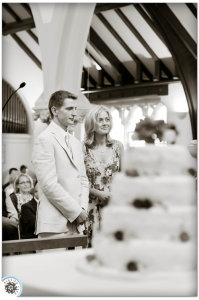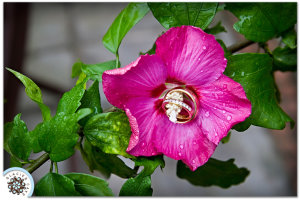Embracing the Weather with Photography: Part 2: "
Previously we discussed how sunny, rainy, snowy and overcast weather can affect your scene, now we will look at how other forms can help and hinder your photography…
Cloudy Skies

Image by MorBCN
Many photographers are often thankfully for bright but cloudy skies, as that thin veil of cloud can diffuse the sun’s rays producing a perfect delicate and soft light – much like a softbox does. However on a windy day clouds can be blown across the sky in minutes and your perfect light could be gone as quickly as it arrived so you’ll be forced to work quickly and if you have limited patience you may be forced to restrict yourself to grabbing safety shots before getting creative.
For the landscape enthusiast this can often lend itself to the genre; for example a valley sewn together with patchwork-like fields can look radiant with dappled sunshine and spotted a few darkened cloud shapes. To get the most out of this scene, meter for the whole frame to gain the average exposure or bracket exposures to compile together later. Some models now offer an in-camera HDR setting – if you are confident in its abilities perhaps try it here.
To capture nothing but the clouds, such as a fierce storm cloud before it breaks; set your camera upon a tripod, select a narrow aperture, zoom in as close as possible and meter across the scene due to the varying exposure levels within the frame – as such a circular polariser may be of benefit here too.
Frost

Image by Eduardo Amorim
Shooting in the early hours can often produce the best photography thanks to that soft, warm and subtle light and if the ground is sprinkled with a fine layer of frost, the colours of the earth can appear luminous as the ice shines against the shine’s glare. Find a location where the ground shows through and a variety in colours will also add interest. The potential for delicate frost-covered macro shots is vast, so pack a waterproof blanket and get as close to nature as you dare. Use a wide aperture and employ a polarizer should you want to saturate colours.
Lightening Storms
That elusive and fleeting electrical bolt can drive even the most patient of photographers crazy. To maximise your chances of a decent capture set your camera on a tripod and turn off the lens’ vibration reduction option. If are shooting with a compact switch it into fireworks mode and keep as still as possible or balance the device on something solid.

Image by Brujo+
Finding a good shooting spot is half the battle. Shooting in urban environments such as towns and cities are counter-productive as the light pollution can detract from the ambience of the storm, so if possible travel outside of the urban district and away from abundant light sources to a place where the skies appear darker.
When using a DSLR set the camera into Manual and ISO 100. A wide angle lens will give you a better chance of catching the fork as it falls and this offers you the potential to later crop in for effect. Alternatively zoom in with a telephoto for extra drama and the ability to play with perspective. In either case it is ideal to compose the scene to include foreground interest.
Ideally an aperture of around f8 will yield strong results but will depend on what else you want to capture within your scene. Keep the shutter open using the bulb exposure for a shutter speed of around 15 to 30 seconds (or even more in some cases) and release the button when the fork hits. Due to the sporadic nature of lighting you will find you have to repeat this process several times to get a decent shot and for well defined images it is recommended that you incorporate a remote to release the shutter or a self timer (although this will take extra patience).
Fog
Don’t think of fog as dull, think of it as enchanting and like most weather, fog looks best at first light. A tripod is essential and lengthy exposures will work best here with a polarising filter helping to control exposure.

Image by monkeyleader
Foggy scenes are generally low-contrast events and as such colours are muted – two things you can later tweak in the editing suite if required. However, this lack of immediate interest combined with a void backdrop will mean you will need to compensate in other ways to engage the viewer – i.e. intriguing foreground interest, so consider the composition wisely.
Wind
A strong gust of wind is often the common culprit for shaky landscape captures, so take a plastic bag along with you to the location and fill it with rocks and stones along the way. Hang this bag on the hook underneath the base of the tripod to ground it; alternatively you can use your camera bag backpack.

Image by dawn m. armfield
Once in position and a stable position too, consider using a lengthy exposure to capture the movement of clouds across the sky. Again a polariser or ND Grad filter could help you here.
Post from: Digital Photography School

"














 We have featured some awsome
We have featured some awsome